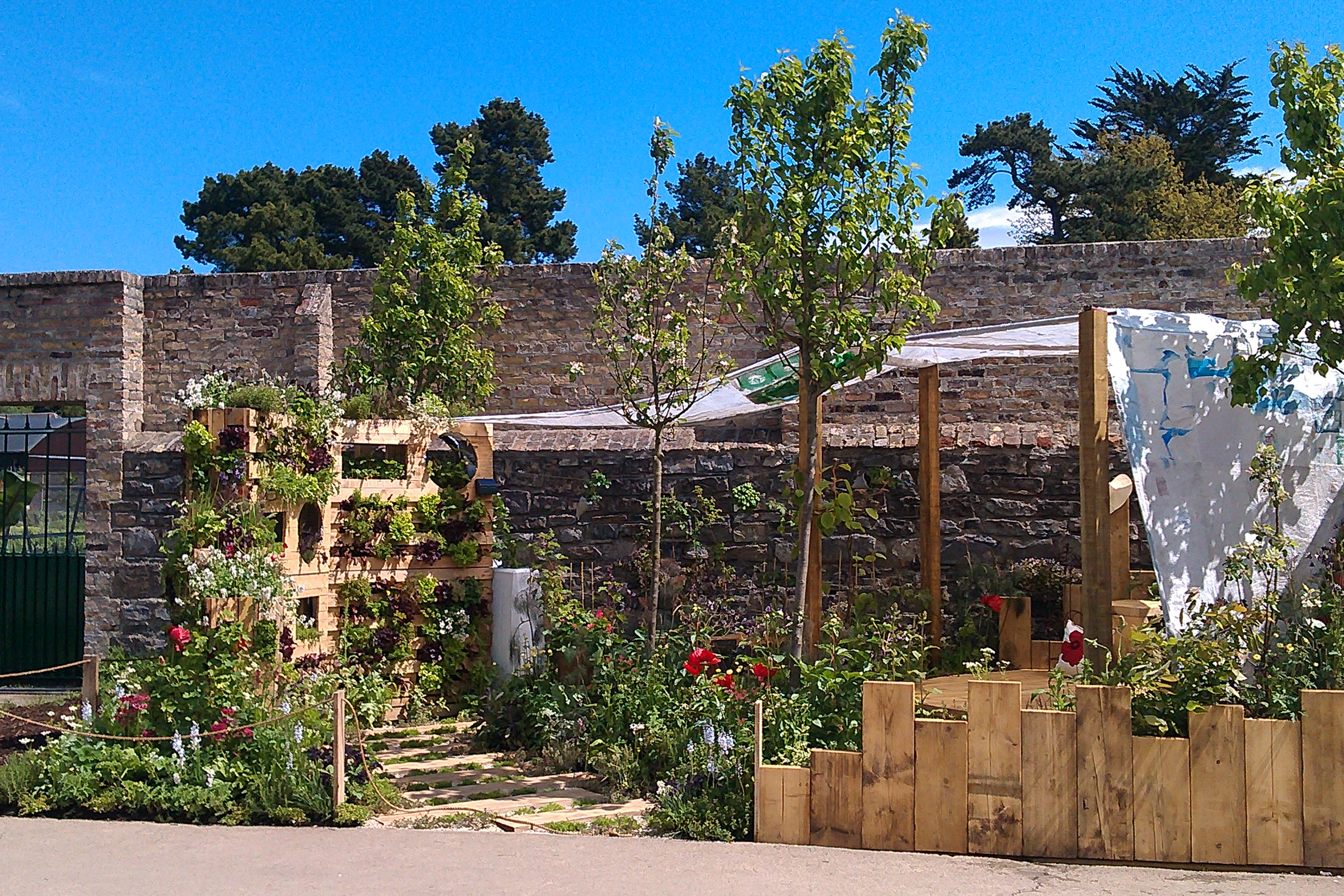Featured by Amsterdam Alternative, OT301’s agenda and Instagram; 6-8 December 2023, 4bid Gallery, Amsterdam, Overtoom 301.
I was very proud to present my work ‘Where we’re at’ (‘Ott, ahol mi vagyunk’) in Amsterdam’s 4bid Gallery in December 2023, as a follow-up of the Igor Metropol Studio Residency I did in 2022-23 in Budapest, in cooperation with several partners credited below. ‘Where we’re at’ is an interactive installation that reflects on the similarities and differences between the global waste crisis and a specific local tradition of precarious survival in Eastern Europe. Its materials and circuits are composed of trash, its stripped copper is sensitive to the touch. It aims to provide a window into the experiences of people who engage with lomi’ as an ever-so-unpredictable livelihood.


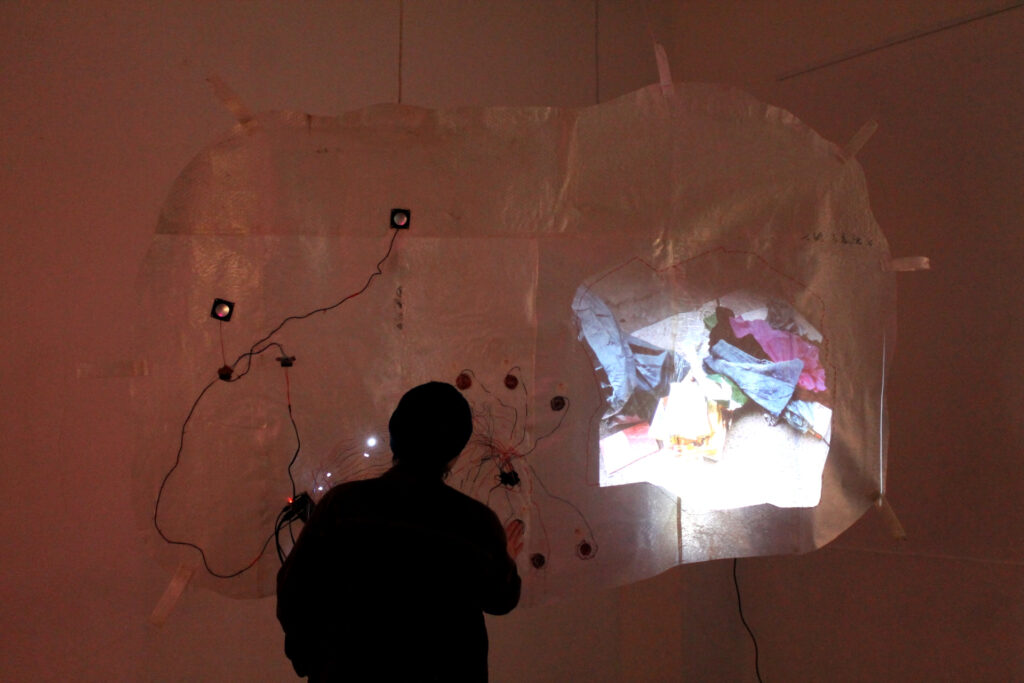
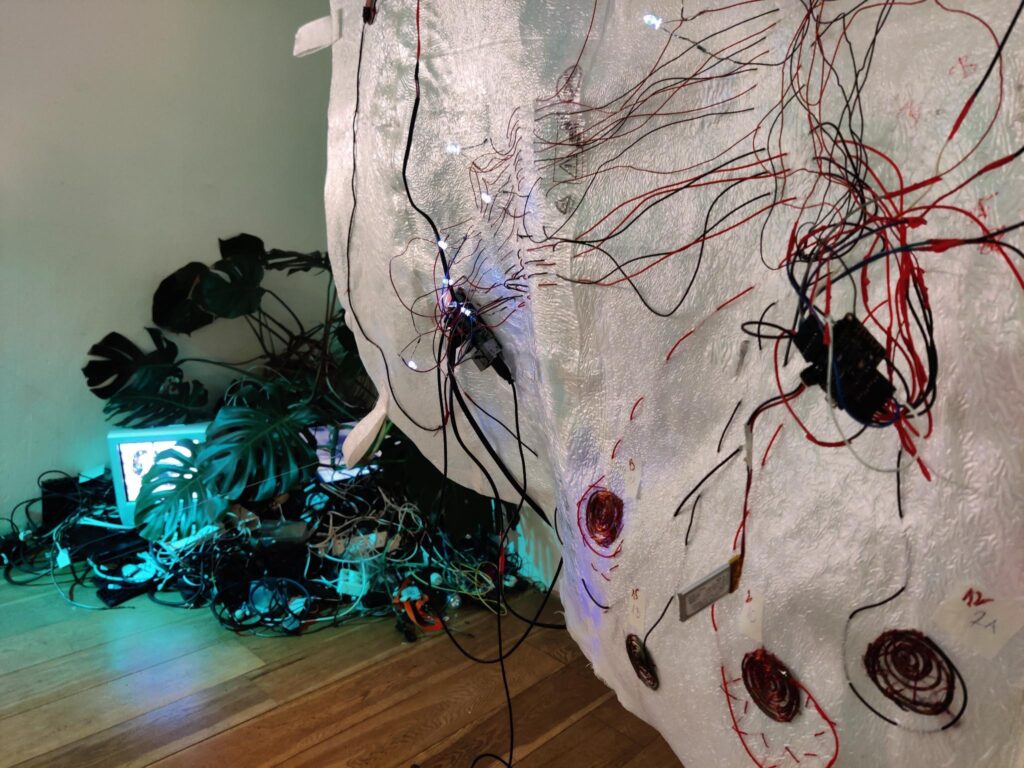
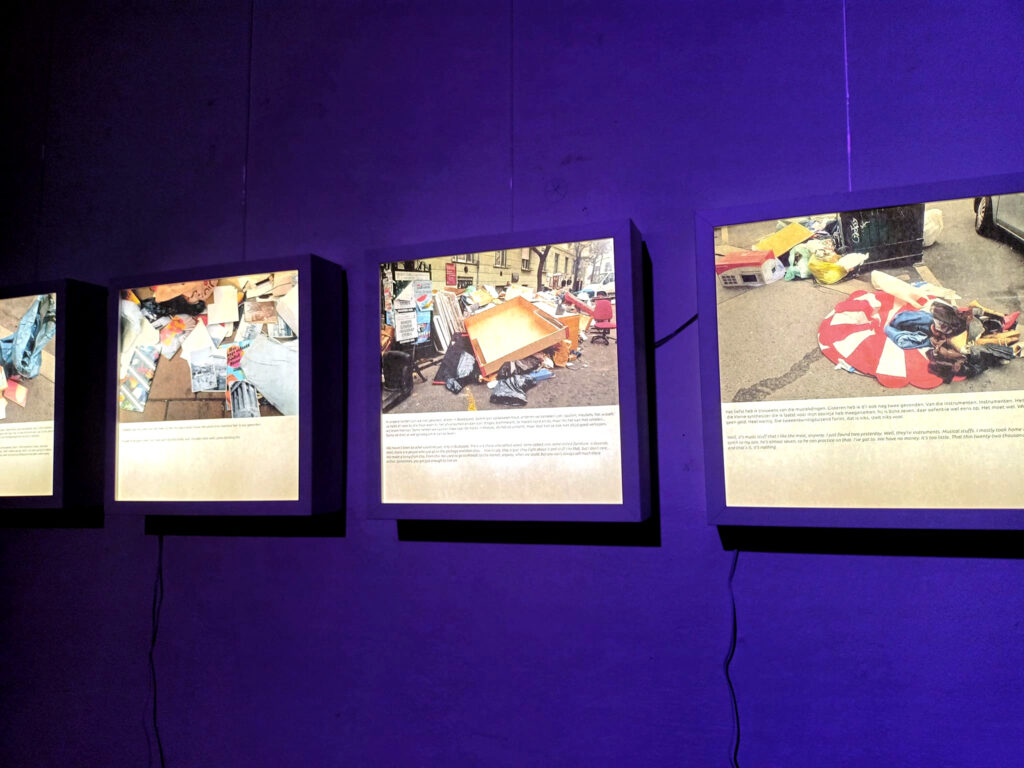

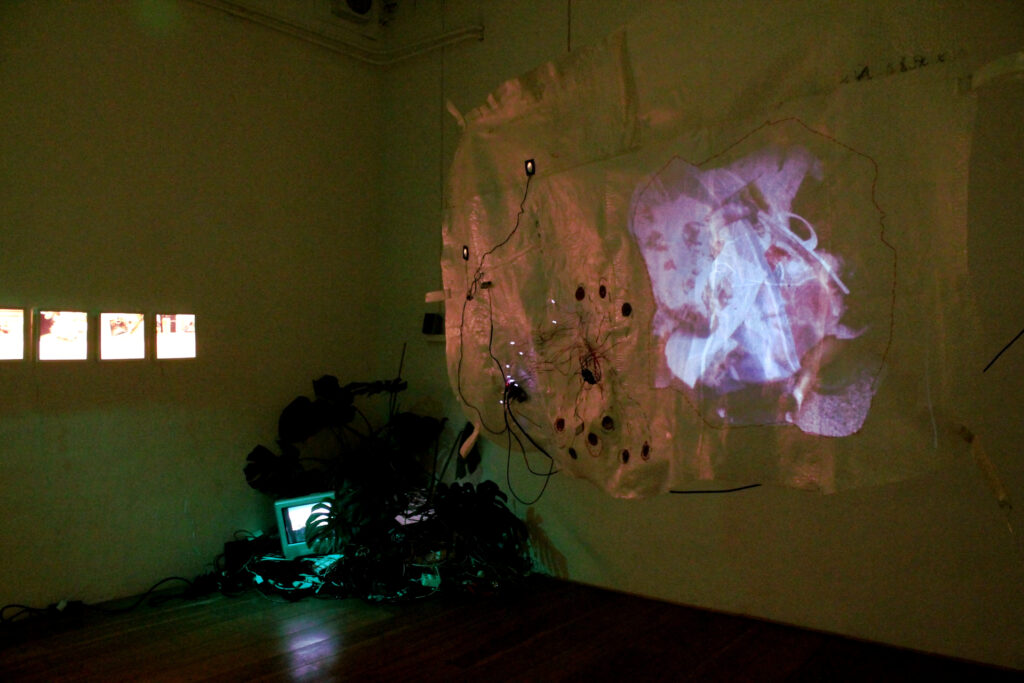
Lomtalanítás is a once-a-year-only junk clearance when whole neighborhoods of Budapest, hundreds of households all simultaneously, are allowed to dispose of their bulky waste on the street to be collected. Streetscapes change into trashscapes. Lomi is the practice of going over these hills of waste the night before the collection and scavenging useful things from the bulk, a practice common in all places where lomtalanítás happens. Traditionally, lomtalanítás serves as a (partial) livelihood for people in extreme poverty. They select, transport and sell the waste by the category to several parties (recyclers, companies, village markets, etc). This pattern is somewhat similar to the process of high-GDP countries dumping their tonnes of toxic (electronic) waste in low-GDP countries via gray-zone, semi-legal methods. Poor populations of the victim countries select, burn and sell the waste, just like the rummagers of the lomtalanítás do. Copper, aluminum, steel, lead, precious metals extracted from printed circuit boards are the most valuable in both processes. Wood is burned for heat, and some objects and tools can be resold or repaired for own use. The finding, selecting, transporting and sales of the materials happens within a one-of-a-kind informal economy with its own unwritten rules.
‘Where we’re at’ is hosted by 4Bid gallery @OT301. 4Bid develops temporary cultures and interlinks fields of knowledge and comprehension through arts and culture. 4bid is a non-profit space that strives to bring consciousness about current social situations. On the three afternoons of the exhibition, discussions will take place with the moderation of the author Juli Laczkó and renowned intermedia artist Eszter Ágnes Szabó. We had open discussions about the perception and journey of materials to waste and beyond, about geographical differences regarding the perception of sustainability, and about the potential of an anarchist view of the Solarpunk movement, as well as a circuit meditation workshop that anyone could participate in, with Eszter’s guidance.

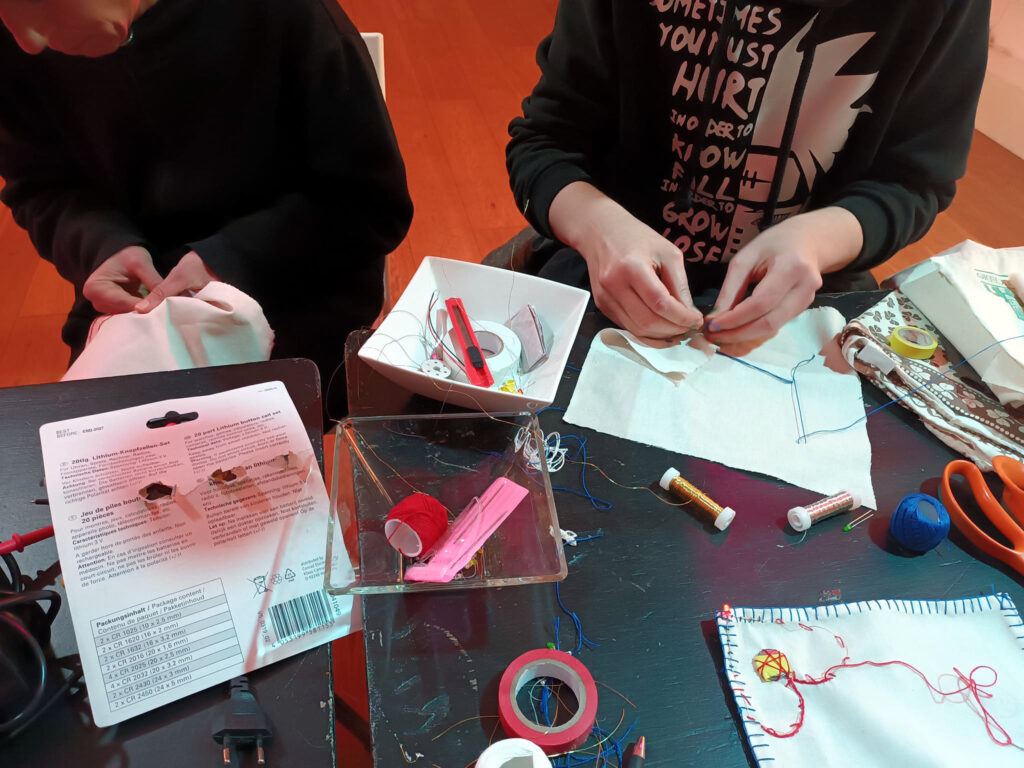

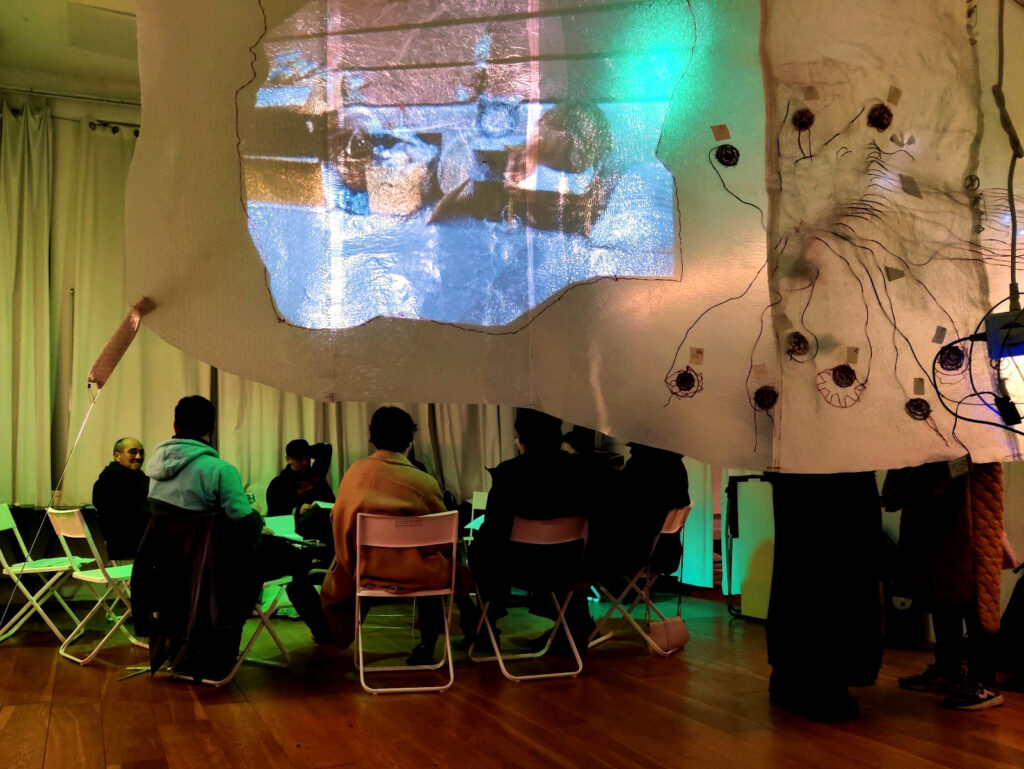
Partner in workshops and discussions during the exhibition: Eszter Ágnes Szabó
Interaction support: Hazal Ates
Dutch translation: Mari Alföldy
Materials used:
– utoplast
– ESP32 prototyping board
– Raspberry Pi 3
– PC speakers
– batteries
– cables from a Ravensburger Elektrotekniek educational kit
– embroidery thread
– copper from old cables
– electronic waste from the Technologia Incognita hackerspace
– TV and DVD player, 4bid
– Monstera Deliciosa, Transnational Institute
– sound- and image recordings of the 2022 winter „lomtalanítás” in Budapest
– Arduino IDE, Pure Data, Raspbian OS, Linux Mint, GIMP, Inkscape, Open Office
– Picture frames and LED strips
and details of the following video reports:
Journeyman Pictures: Electronic Trash Village, 2007
Vanessa Kanbi: The Worlds Biggest E-waste Site, Agbobloshie, Ghana, 2020
ToxiCity, life at Agbobloshie, the worlds largest e-waste dump in Ghana, 2018
Special thanks Amsterdam
Nelly and Ben, TechInc
Susana, TNI
Simona and Irina, 4bid
Proj, LAG
Webmind, LAG
Ellen Keijzer, HKU IBB Kunststof Werkplaats
Ivo, Amsterdam Alternative
Maxigas
Special thanks, Igor Metropolstudio residency, Budapest, December 2022-January 2023
Nóra Lukács, Péter Puklus, Réka Harsányi
Made possible with the support of the Amsterdams Fonds voor de Kunst.
